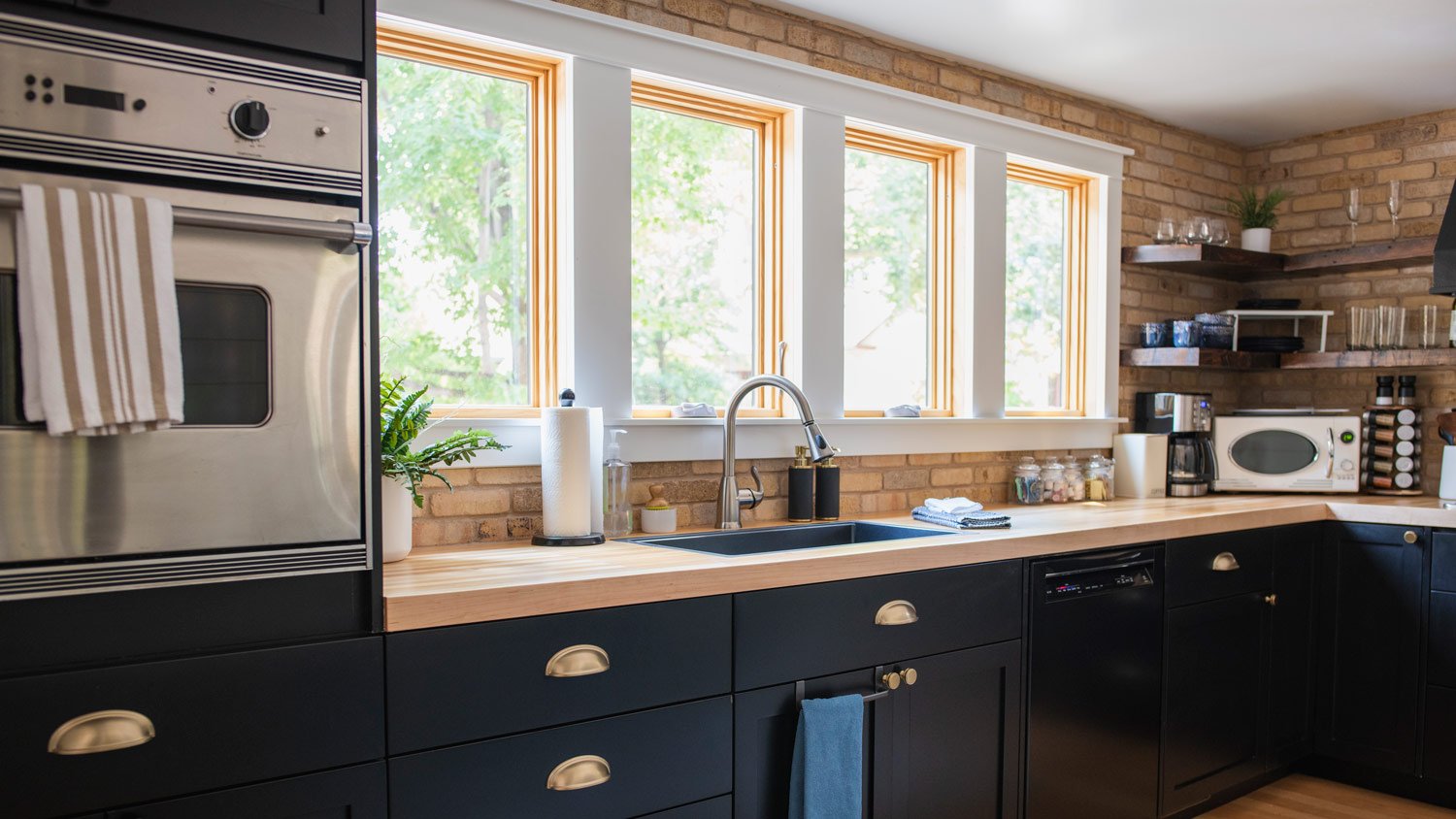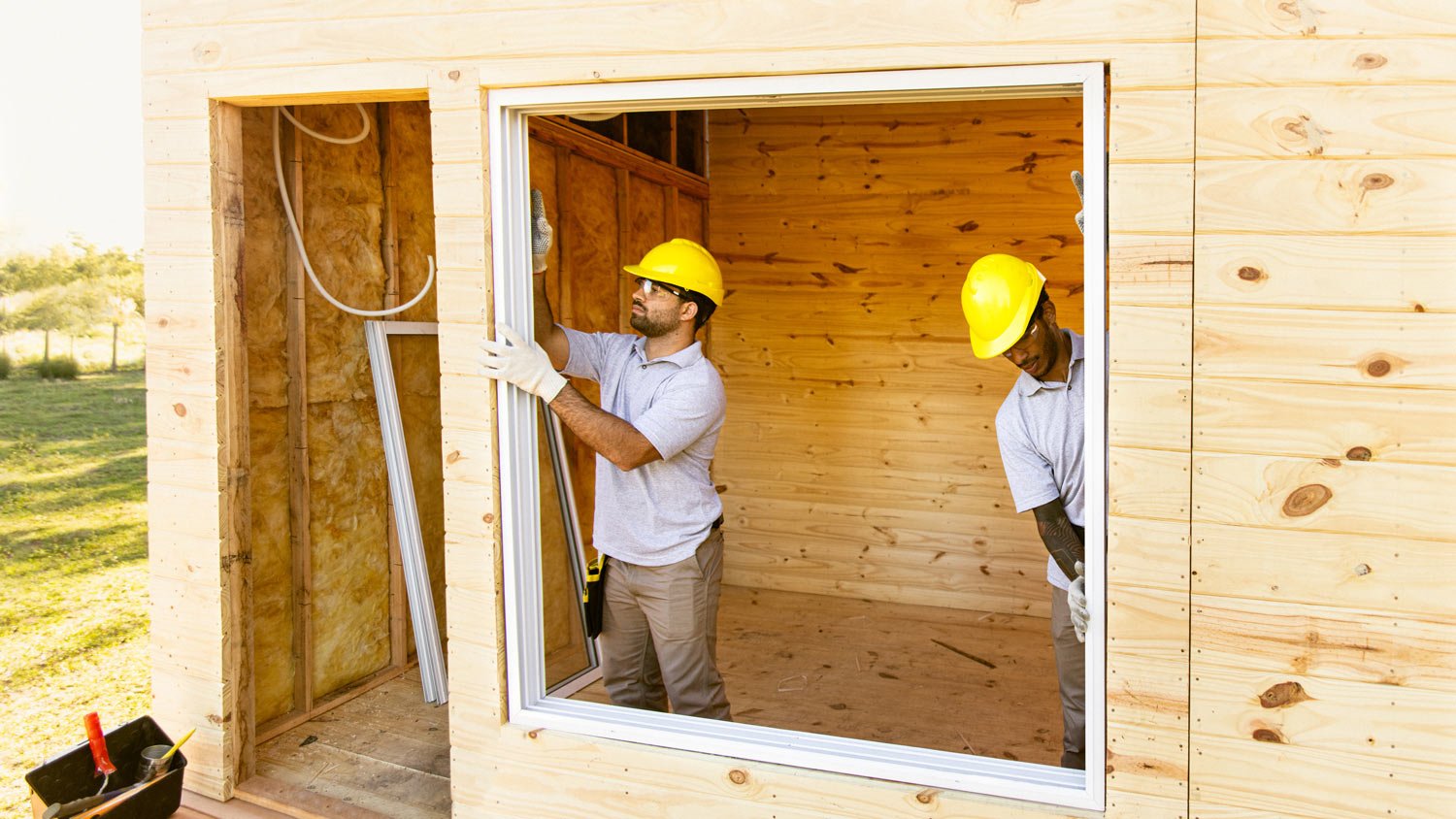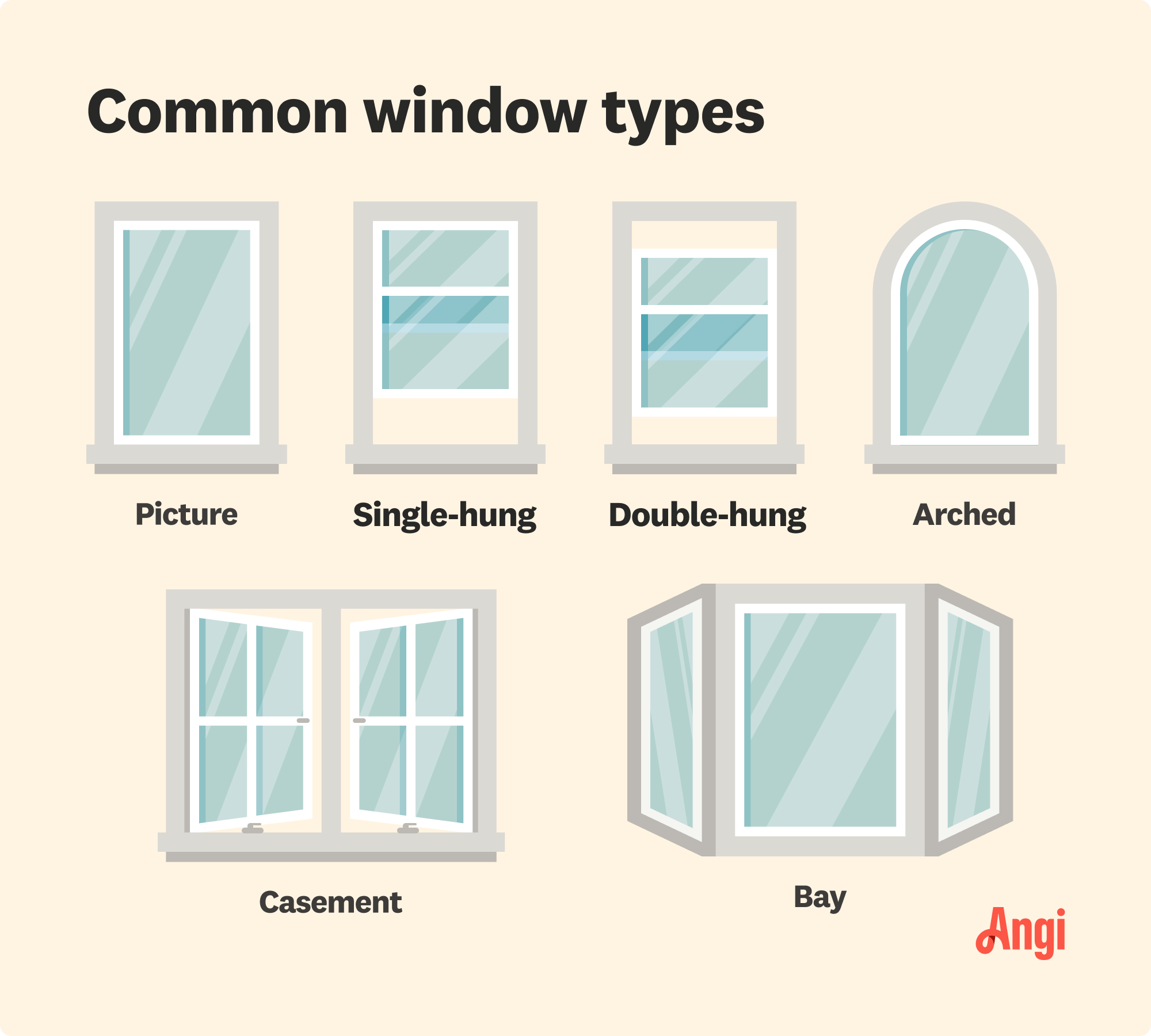How Much Does It Cost to Add Windows to a House? [2025 Data]
The average cost to add a window to a house is $5,800, but prices can fluctuate between $1,700 and $16,500 depending on the type of wall you’re cutting into, the size and type of window, and other major cost factors.


The cost to add a window to your home runs from $1,700 to $16,500, with the average homeowner paying $5,800. Adding a new window can be well worth the cost if it adds egress to a room in the event of a fire, offers more natural light or nice views of the surrounding area, or helps with air circulation in the appropriate climates.
The largest factor impacting the cost to cut, frame, and install a window is the type of exterior wall (and its cladding) you’ll have to cut through, but the type and size of window can also impact the cost. Permits, structural engineers, and potential rerouting of plumbing and electrical can also increase the cost. We’ll explore these cost factors more closely below.
Factors Affecting Cost to Add Windows to House

The biggest factor affecting how much it costs to add windows to a house is the type of exterior wall you have to cut through. Other factors include the type and size of windows, permit costs, and the additional labor that may be required.
Type of Wall
The type of exterior wall is the single most important factor in calculating the cost to install a window opening. The work can cost as little as $1,000 or as much as $5,500, depending on the type of wall and size of the cut.
Note: The table below outlines the cost of the actual cutting and framing work; you’ll still pay for the window materials and installation labor on top of these prices.
| Type of Exterior Wall | Typical Cost Range |
|---|---|
| Exterior stud wall | $1,000–$2,000 |
| Brick wall | $2,000–$5,500 |
| Concrete wall | $1,500–$5,500 |
Exterior Stud Wall
Cutting into an exterior stud wall costs between $1,000 and $2,000. This is a much easier job than other types of walls.
Most modern homes have exterior stud walls (sometimes called stick-framed walls). This means, from inside out, the wall consists of drywall, studs, sheathing, and air and water barrier, and cladding, such as vinyl or aluminum siding. The cladding could also be brick or stone veneer.
Brick Wall
Older homes may have more than a simple brick veneer cladding; they are true brick homes with actual brick walls, several layers thick. Cutting through brick is challenging work and costs between $2,000 and $5,500, depending on the size of the opening and thickness of the wall. You’ll need to hire a local mason to perform this service before the window can be installed.
Concrete Wall
There are two types of concrete walls you may need to cut through: concrete block and poured concrete.
| Type of Concrete Wall | Typical Cost Range |
|---|---|
| Concrete block | $1,500–$4,500 |
| Poured concrete | $2,000–$5,500 |
Concrete block homes have solid exterior walls, usually clad with vinyl or aluminum siding, though you can also stucco or simply paint the walls. Most window experts aren’t cut out for cutting into concrete walls; you’ll need to hire an experienced concrete cutting pro near you to tackle this job. Expect to pay $1,500 to $4,500 for this work.
Your foundation may have a poured concrete wall. If you’re adding windows to your basement, you’ll instead need to budget for cutting through poured concrete, which can cost even more—between $2,000 and $5,500.
Load-Bearing Walls
Whenever you are installing a window or a door in an existing wall, you need to hire a structural engineer. Getting an inspection from a structural engineer costs between $350 and $800.
If the structural engineer determines the wall is load-bearing, you’ll need to take extra precautions when installing a window. This will increase overall project costs and timelines. In some cases, this can add $2,000 or more to the overall project cost.
Size of Opening
The size of the window opening has an impact on how much it costs to add a window to your home. Small windows will be on the lower end—potentially as low as $1,500—while medium-size windows will cost an average of $5,800. Large openings can exceed $16,500.
Type of Window
The main cost when adding a window to your home is the actual cutting and framing, but you’ll still need to pay for the actual window—and the local window company that installs it.
The cost of the window itself ranges from $65 to $5,000, depending on the type of window. Some window styles can even exceed this, such as bow windows (up to $6,500) and bay windows (up to $7,100).
The labor cost to install a window is generally $100 to $300, but large, custom windows may cost up to $600 for the labor alone.

The table below shows common window prices by style:
| Window Type | Typical Cost Range |
|---|---|
| Arched | $350–$1,000 |
| Awning | $400–$950 |
| Bay | $900–$7,100 |
| Bow | $1,500–$6,500 |
| Casement | $150–$1,000 |
| Double-hung | $150–$650 |
| Egress | $100–$700 |
| Floor-to-ceiling | $700–$5,000 |
| Folding | $500–$900 |
| Hopper | $150–$650 |
| Jalousie | $170–$380 |
| $100–$400 | |
| Picture | $65–$700 |
| Single-hung | $100–$400 |
| Skylight | $900–$2,500 |
| Storm | $90–$400 |
Plumbing and Electrical Work
If the wall you’re cutting into contains any plumbing or electrical, you’ll need to reroute the pipes and wires. That means hiring a plumber or electrician near you.
Plumbing: Plumbers charge $45 to $200 an hour. The typical cost to reroute plumbing is $700 to $1,500.
Electrical: The cost to rewire a wall is roughly $2 to $4 per square foot, but electricians may charge a standard minimum service fee to stay profitable on small jobs.
Permits
A construction permit costs between $150 and $2,000. The size of the job and where you live can impact how much you’ll spend.
You will need a permit to cut an opening in your home and install a window. Often, your contractor will obtain the permit on your behalf.
Recladding and Repainting
After the window is installed, you will likely need to do a little siding repair on the exterior of your home and repaint the wall inside your home. Both of these are accessible enough to be a DIY project, but you can also hire local siding pros and painters to tackle the job.
Minor siding repairs cost $1 to $12 per square foot.
Interior painting costs $2 to $6 per square foot.
General Contractor
A project of this size may require multiple contractors, from window installers, masons, and concrete pros to plumbers, electricians, siding companies, and painters. A local general contractor can help by organizing the project and subcontracting the specialists for you.
On average, general contractors charge 10% to 20% of the total project costs.
Ongoing Costs
After adding a new window to your home, you’ll need to budget for ongoing costs.
Maintenance and Cleaning
Windows require regular upkeep, including regular cleaning and annual maintenance. You likely already perform this for your existing windows (or hire someone to handle this).
One or two extra windows won’t pose much of a financial change at all. In fact, there’s no need to outsource this at all. Just follow these easy window maintenance tips yourself!
Repairs
Every additional window you add to your home increases your odds of a window breaking. Cracked glass, air leaks, rotting frames, you name it—over time, windows will need repairs.
On average, window repair costs $405, but this can vary depending on the specific problem.
Replacement
You don’t usually need to budget for replacing an exterior wall every two decades, but the same cannot be said for windows. Once you’ve added a window to your wall, you’ll need to think about eventual replacement costs. On average, windows last between 15 and 30 years before you need to replace them. Replacing a window costs between $300 and $2,500 per window.
DIY Window Framing and Installation vs. Hiring a Pro
Adding a window to an existing wall is not a task that any homeowner should attempt on their own. This project requires a thorough inspection by a structural engineer near you, potentially specialized labor from a mason or concrete pro, minor work from a plumber or electrician, and then an expert installation from a window installer. Attempting this on your own could lead to severe damage to your home and severe injury to yourself.
That said, there are ways you can cut down on labor costs. For instance, you can handle the siding repair and interior painting when the work is done. Otherwise, this is a job best left to the pros.
Cost to Enlarge Existing Window
On average, enlarging a window costs $1,200 to $5,000. This includes both the labor costs and the cost of the new window.
Why enlarge a window? In some cases, your wall may already have a window; rather than paying for a totally new window, you could save money by enlarging the existing one, which still adds more natural light. This work should still be left to a pro, but it’s not as expensive.
How Angi Gets Its Cost Data
Home is the most important place on earth, which is why Angi has helped more than 150 million homeowners transform their houses into homes they adore. To help homeowners with their next project, Angi provides readers with the most accurate cost data and upholds strict editorial standards. We extensively research project costs to develop the pricing data you see, so you can make the best decisions for you and your home. We rely on reputable sources, including the U.S. Bureau of Labor Statistics, academic journals, market studies, and interviews with industry experts—all to ensure our prices reflect real-world projects.
Want to help us improve our cost data? Send us a recent project quote to costquotes@angi.com. Quotes and personal information will not be shared publicly.
Frequently Asked Questions
Adding windows to a house is expensive. Budget roughly $5,800 to add a single window, and double or triple that to add two or three. In some cases, adding a single window can exceed $20,000, depending on the type of exterior wall, the size of the window, the type of window, local permit costs, and other factors.
Yes, you absolutely need a permit to add a window to your house. Your contractor can likely obtain this permit on your behalf. Ask about this when getting quotes from multiple window contractors.
Cutting a concrete wall for a window or door costs between $1,500 and $5,500. Cutting through concrete block walls specifically costs from $1,500 to $4,500 while cutting through poured concrete is a little more expensive: $2,000 to $5,500.















